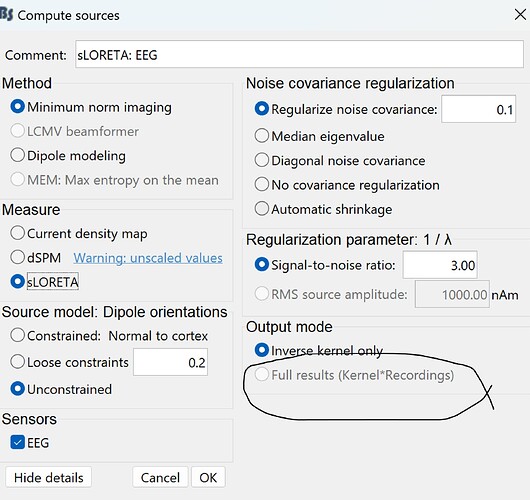Hello Brainstorm Community!
I've recently started using Brainstorm to do source localization, and later, ICA decomposition, on resting-state EEG data. I have read some of the discussions relevant to the topic of bad segments and how these are handled in various procedures. Can you please confirm my understanding of the following points?
(1) Segments which have been marked as "bad", such as in my case, highlighted pieces in the continuous dataset marked "rejected" and boundary events marked "bad", all of which are colored red, are still used during source localization and ICA decomposition, unless explicitly removed.
(2) However, calculating the noise covariance matrix automatically excludes these red-marked segments or points from the calculation.
(3) It is valid and recommended to still include the bad segments in the source localization and ICA decomposition procedures to prevent discontinuities in the dataset which can be a huge problem for these procedures.
(4) Since the noise covariance matrix calculation excluded contributions from the bad segments, we can still generate a valid source localization of the data. It only remains for us to extract those time segments that are deemed "good" for subsequent analyses.
(5) So, we can run source localization and then ICA decomposition without first extracting those bad segments (or importing only the concatenated good segments) and we should be able to get valid results. After all of these have been done, we can simply extract the time intervals that are deemed good segments for subsequent analyses.
(6) Question: At which point can I do a mapping of the EEG data to a functional atlas?
-Gin
